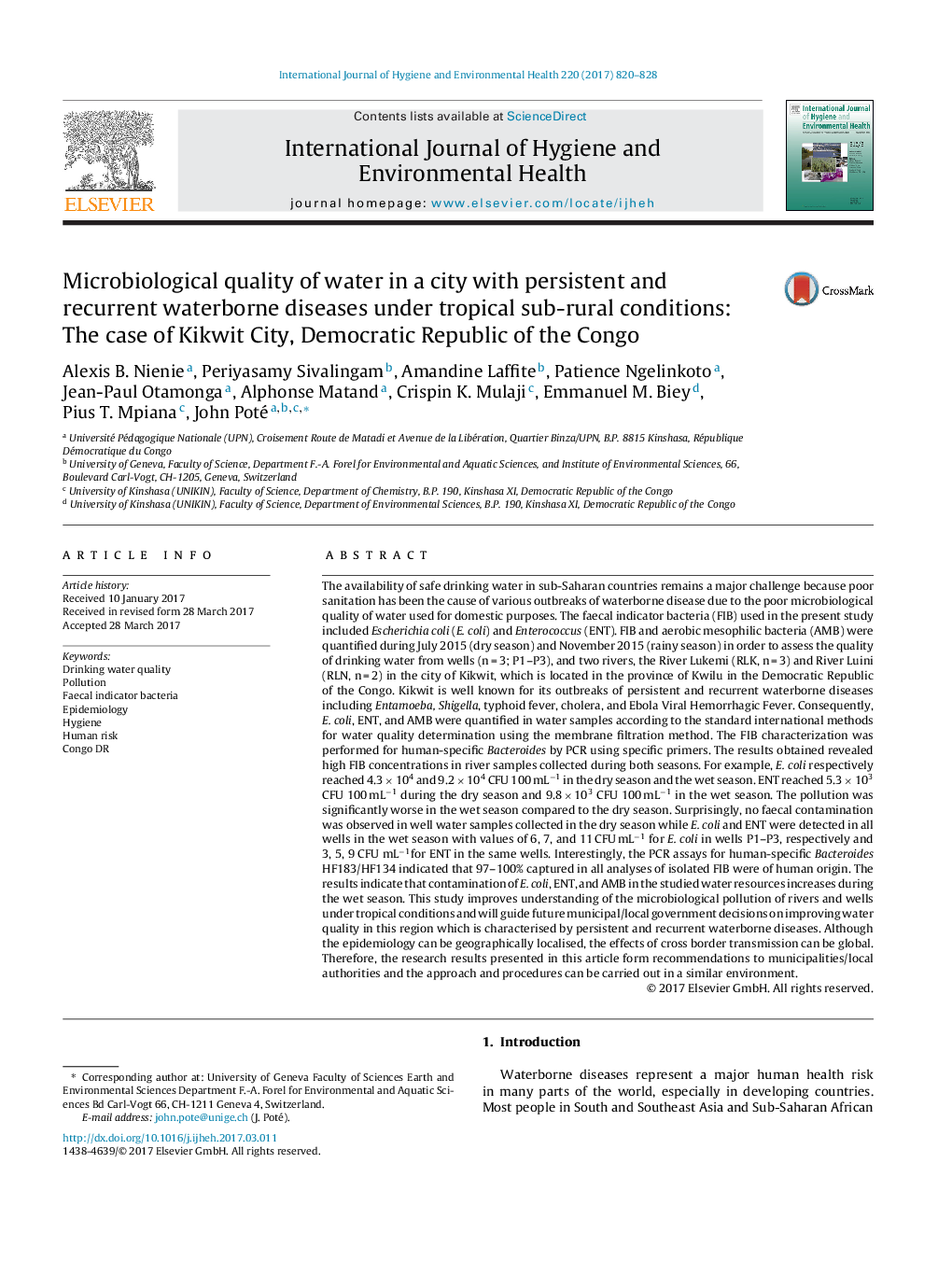| کد مقاله | کد نشریه | سال انتشار | مقاله انگلیسی | نسخه تمام متن |
|---|---|---|---|---|
| 5560578 | 1561872 | 2017 | 9 صفحه PDF | دانلود رایگان |
The availability of safe drinking water in sub-Saharan countries remains a major challenge because poor sanitation has been the cause of various outbreaks of waterborne disease due to the poor microbiological quality of water used for domestic purposes. The faecal indicator bacteria (FIB) used in the present study included Escherichia coli (E. coli) and Enterococcus (ENT). FIB and aerobic mesophilic bacteria (AMB) were quantified during July 2015 (dry season) and November 2015 (rainy season) in order to assess the quality of drinking water from wells (n = 3; P1-P3), and two rivers, the River Lukemi (RLK, n = 3) and River Luini (RLN, n = 2) in the city of Kikwit, which is located in the province of Kwilu in the Democratic Republic of the Congo. Kikwit is well known for its outbreaks of persistent and recurrent waterborne diseases including Entamoeba, Shigella, typhoid fever, cholera, and Ebola Viral Hemorrhagic Fever. Consequently, E. coli, ENT, and AMB were quantified in water samples according to the standard international methods for water quality determination using the membrane filtration method. The FIB characterization was performed for human-specific Bacteroides by PCR using specific primers. The results obtained revealed high FIB concentrations in river samples collected during both seasons. For example, E. coli respectively reached 4.3 Ã 104 and 9.2 Ã 104 CFU 100 mLâ1 in the dry season and the wet season. ENT reached 5.3 Ã 103 CFU 100 mLâ1 during the dry season and 9.8 Ã 103 CFU 100 mLâ1 in the wet season. The pollution was significantly worse in the wet season compared to the dry season. Surprisingly, no faecal contamination was observed in well water samples collected in the dry season while E. coli and ENT were detected in all wells in the wet season with values of 6, 7, and 11 CFU mLâ1 for E. coli in wells P1-P3, respectively and 3, 5, 9 CFU mLâ1for ENT in the same wells. Interestingly, the PCR assays for human-specific Bacteroides HF183/HF134 indicated that 97-100% captured in all analyses of isolated FIB were of human origin. The results indicate that contamination of E. coli, ENT, and AMB in the studied water resources increases during the wet season. This study improves understanding of the microbiological pollution of rivers and wells under tropical conditions and will guide future municipal/local government decisions on improving water quality in this region which is characterised by persistent and recurrent waterborne diseases. Although the epidemiology can be geographically localised, the effects of cross border transmission can be global. Therefore, the research results presented in this article form recommendations to municipalities/local authorities and the approach and procedures can be carried out in a similar environment.
Journal: International Journal of Hygiene and Environmental Health - Volume 220, Issue 5, July 2017, Pages 820-828
